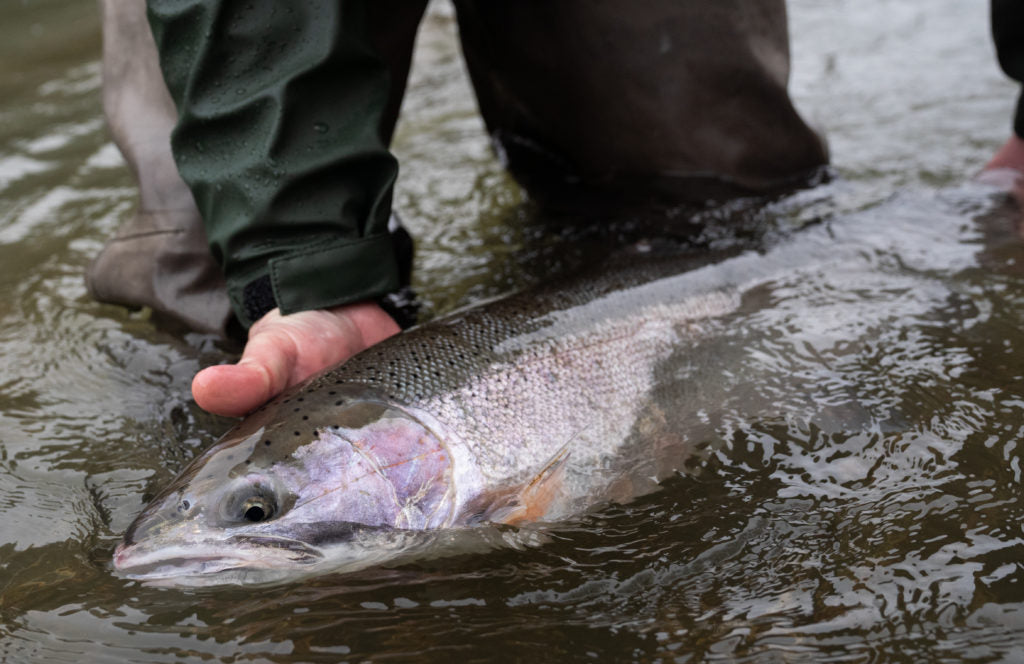
1. Fish light and inside
In high water, the steelhead are going to be on the move and they are trying to find the path of least resistance, which is often right by your feet. I like to fish light and short tips, casting to the near water first and fishing it well. Using 10 feet of T-7 or T-10 will get that fly to swing into the bank. Hang down grabs are very common in high water so make sure you get that fly swinging all the way below you.
2. Go big or go home
When the water is high, it is typically dirty too. We have been fishing in 1-2 feet of visibility often recently and your smaller steelhead flies won't do. The fish need to be able to see the fly in these conditions and they are much more likely to see a big intruder rather than a small marabou. In addition, dark flies with a lot of flash will be easier to see in poor visibility.
3. Use appropriate tackle
Put the small rods and 12 pound test away. High water means more resistance and that 20 pound fish is going to be much harder to land. Step up to an eight weight rod with a 20 pound leader. Our favorite is Maxima Ultragreen but you can use a variety of leader materials from any reputable manufacturer. Land the fish quickly and put them back on their way to the spawning grounds.
4. Fish the moving water
Focus more on the tailouts and the heads of your pools. In high water, steelhead are moving and these areas are going to facilitate more encounters with aggressive fish. Still remember to fish to your hang down!
5. SLOW DOWN
Fly speed and the way you cover water will increase your chances of connecting with a steelhead. In dirty water, I will fish a one-step approach in the likely zones. Slow your fly way down to stay in the zone as long as you can. You can do this through a proper mend in the beginning of your presentation. Let your shooting head straighten out and engage once your line has become tight. Your fly should be crawling through the insides, but not getting hung up.


